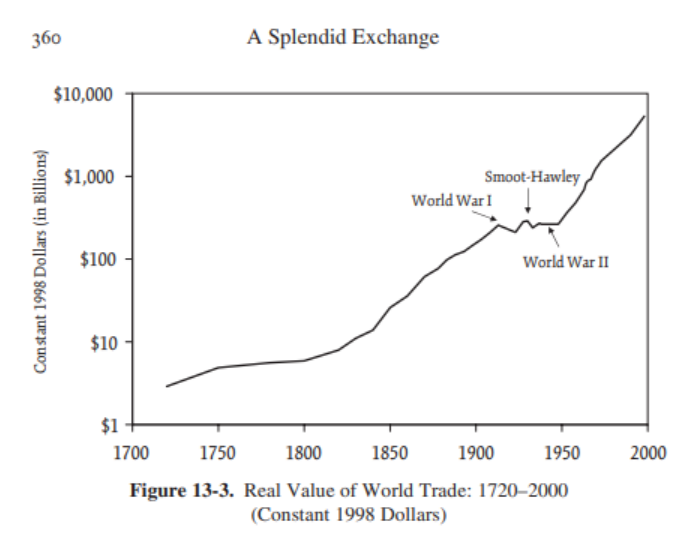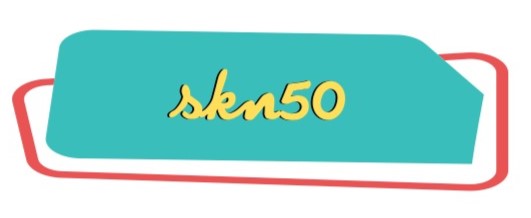Widespread tariffs are a nasty thought.
How do I do know this?
Historical past exhibits they don’t work.
Let’s look again.
JP Morgan’s Michael Cembalest wrote about President McKinley’s disastrous tariffs within the late-1800s:
President William McKinley tariffs have been highly regarded on the time they have been enacted, however they precipitated an nearly quick inflation spike. Voters have been very sad: a couple of months later, the GOP misplaced 100 seats within the 1890 midterm elections. The GOP loss in 1890 is the third largest within the historical past of the Home going again to the Civil Battle.
Sounds nice in principle however not a lot in follow.
I first realized of tariffs from Ferris Bueller’s Day Off:
These didn’t work both.
A Splendid Alternate by William Bernstein is the most effective e book about the advantages of free commerce.1 Right here’s a passage concerning the Smoot-Hawley tariffs that have been enacted within the Thirties:
All around the world, for 3 years after the passage of Smoot-Hawley in 1930, as French lace, Spanish fruit, Canadian timber, Argentine beef, Swiss watches, and American vehicles slowly disappeared from the world’s wharves. By 1933 the complete globe appeared headed for what economists name autarky–a situation through which nations obtain self sufficiency in all merchandise, irrespective of how inept they’re at producing them.
This was the result:
Between 1930 and 1933, worldwide commerce quantity fell off by one-third to one-half. Relying on how the falloff is measured, this computes to three to five p.c of world GDP, and these losses have been partially made up by dearer home items.
You may see the autumn off in commerce throughout this era of isolation:

The Nice Melancholy performed a giant function right here, too, clearly, however a commerce warfare made it worse. Isolationism and protectionism have been additionally partly guilty for World Battle II.
Following WWII nations across the globe opened up commerce. In 1929 People spent 24% of their earnings on meals. At present it’s extra like 10%. This can be a good thing about free commerce.
Clearly, the world is a distinct place now than it was in 1890 or 1929. I really suppose some focused tariffs on a rustic like China might make sense to guard sure industries in america from our financial rival.
Nevertheless, common tariffs will trigger pointless financial ache for companies and customers alike.
However received’t this convey again manufacturing and jobs to America?
No. Cullen Roche explains:
Manufacturing has fallen from 40% to 7% of US employment since 1950 and robotics will decimate the remaining 7% within the subsequent 50 years. These jobs aren’t coming again and making an attempt to show probably the most superior technological economic system on this planet again into an rising market manufacturing economic system is backwards pondering.
People can have fewer decisions as a result of the federal government lowered competitors and shopper choices. This can drive UP costs. Particularly when US corporations understand they’ve extra pricing energy as a result of authorities’s manipulation of the market.
A sophisticated economic system shouldn’t need to go backward. It is unnecessary. Joe Weisenthal explains:
A method to consider any comparatively open buying and selling bloc is that by permitting extra specialization and focus, the economic system can construct out extra advanced market objects. If you wish to have autarky in America, you would most likely do it, however good luck constructing out any superior, advanced trade, with so many sources devoted to manufacturing kitchen mitts or microwaves.
Even in case you agree with tariffs as a coverage thought the implementation right here is worse than how the Mavericks traded Luka to the Lakers. You may’t presumably count on international firms or small companies to alter their provide chain and manufacturing capabilities on the fly like this. You may’t try this in a single day.
It’s financial suicide.
Based mostly on the White Home’s numbers, companies pays upwards of 40%, 50%, or possibly 60% in tariffs. Companies will attempt to minimize prices like loopy, which implies a number of layoffs are seemingly coming.
This isn’t sustainable.
The hope is that there will probably be negotiations and that these charges will come down drastically. In the event that they don’t, a recession needs to be the baseline expectation in a commerce warfare like this.
The result right here feels binary.
Whereas not precisely the identical situation, this example jogs my memory a variety of the story from Artwork Cashin about what he realized from a extra seasoned investor about navigating the Cuban Missile Disaster:
Professor Jack was already within the bar, and I got here bursting via the doorways as solely a 19- or 20-year-old might. And I mentioned, ‘Jack, Jack. The rumors are that the missiles are flying.’
And he mentioned, ‘Child, sit down and purchase me a drink.’
And I sat down and he mentioned, ‘Pay attention fastidiously. Once you hear the missiles are flying, you purchase them, you don’t promote them.’
And I checked out him, and I mentioned, ‘You purchase them, you don’t promote them?’
He mentioned, ‘After all, as a result of in case you’re mistaken the commerce won’t ever clear. We’ll all be lifeless.’”
If Trump and workforce maintain these ridiculously excessive tariffs we’ll all be lifeless in a way of talking. It’s going to ultimately nuke the economic system.
Markets are in a freefall however they are going to be fantastic. The inventory market has been via worse than this previously. Shares will come again in some unspecified time in the future.
I’m extra nervous concerning the financial ramifications. Lots of people are going to be in a world of ache if this continues.
Michael and I talked about tariffs and far more on this week’s Animal Spirits video:
Subscribe to The Compound so that you by no means miss an episode.
Additional Studying:
The Wealth Impact
Now right here’s what I’ve been studying currently:
Books:
1Right here’s a free chapter about tariffs and commerce wars that’s price studying.


